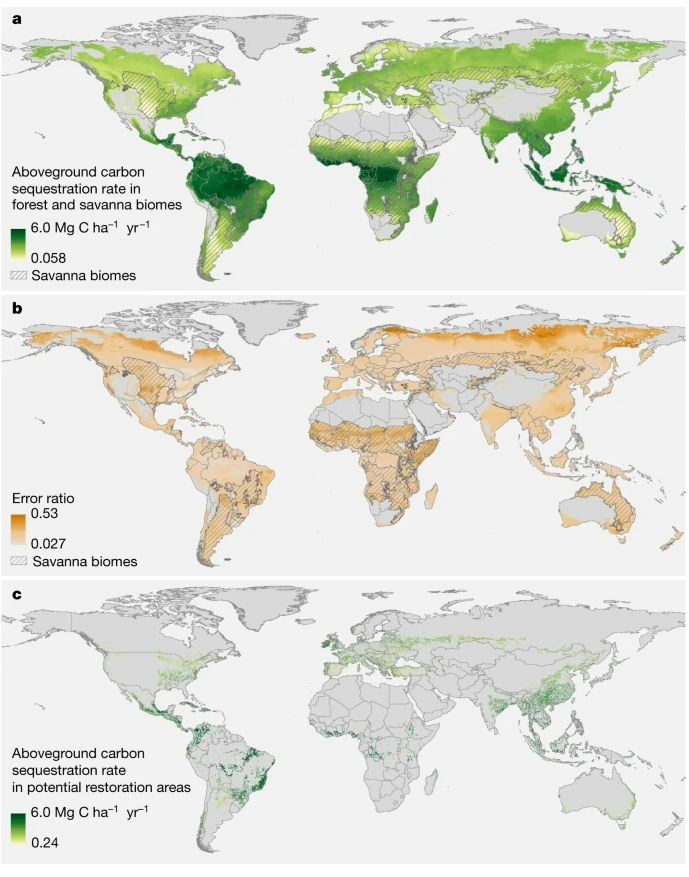"We estimate that 30 years of natural forest regrowth across 349 Mha & 678 Mha could [lead to uptake of 5.9 to 8.9 GtCO₂/yr]". This includes some below ground carbon.
Plenty to unpack, but how does it compare to emission scenarios?
1/
nature.com/articles/s4158…
Plenty to unpack, but how does it compare to emission scenarios?
1/
nature.com/articles/s4158…

1.5°C scenarios with no or low overshoot from #SR15 have afforestation in 2050 (30 years from now) consistent with those numbers (some even higher).
Worth noting, the CO₂ uptake will not continue at that high rate...
2/
Worth noting, the CO₂ uptake will not continue at that high rate...
2/

IAMs that provide data on land use for afforestation use similar areas, of ~350-650Mha in 2050.
The carbon uptake rates seem broadly in the same ranges (though harder to check given the data reported in IAMs).
At least, no glaring inconsistencies...
3/
The carbon uptake rates seem broadly in the same ranges (though harder to check given the data reported in IAMs).
At least, no glaring inconsistencies...
3/

Though, in IAMs there is competing uses for land, such as between afforestation, bioenergy, & found. It is not just the case that all land where forests could grow, forests are grown.
4/
4/

A quick back of the enveloped comparison suggests that IAMs already have (potential) afforestation to similar levels as in bottom up forest potential studies.
This will vary across IAM, but it is not as if IAMs have missed the potential of afforestation...
5/5
This will vary across IAM, but it is not as if IAMs have missed the potential of afforestation...
5/5
• • •
Missing some Tweet in this thread? You can try to
force a refresh
























